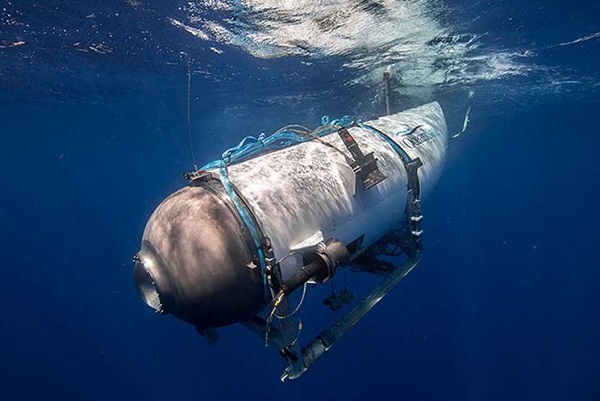What happened to the OceanGate Expeditions submersible vessel Titan
By Olga_Gafurova Friday, 23 June 2023 6:25 PM

After five frantic days of searching, "major pieces" of the Titan have been found near the Titanic wreck - with all five men who were on board the submersible presumed dead.
The US Coast Guard said the breakthrough was made by a remotely-operated vehicle (ROV) which had been scouring the ocean floor.
The deep-sea robot, which was sent below the waves by Canadian vessel Horizon Arctic, made the initial discovery on Thursday morning when it spotted the "tail cone" from the rear tip of the submersible.
It was found approximately 500 metres from the bow of the Titanic's wreck.
Paul-Henri Nargeolet, Stockton Rush, Hamish Harding, Suleman Dawood and Shahzada Dawood are all presumed dead.
Rear Admiral John Mauger told a news conference at Boston Harbour that the ROV then continued to explore the area and found further debris, including the front end of the pressure hull and later the other end.
He said that, in consultation with experts, it had been concluded that "the debris is consistent with the catastrophic loss of the pressure chamber.
"Upon this determination, we immediately notified the families... I offer my deepest condolences," he said.
In response to a question from Sky's James Matthews, officials revealed they ended up spotting "five different major pieces" of the vessel which allowed them to positively identify it as the Titan.
Following the tail cone discovery, the ROV then came across a large debris field nearby, officials said, where the front of the sub's pressure chamber was found.
This provided the "first indication there was a catastrophic event", said Paul Hankins, director of salvage operations in US Navy.
The robot then came across a second, smaller debris field, which contained the other end of the pressurised hold, which Mr Hankins said "basically compromised the totality of that pressure vessel".
Officials said ROVs would continue to search the area to "fully map out what's down there".
But they declined to be drawn on the prospects of recovering the bodies of those who died.
Rear Admiral John Mauger told reporters that it was an "incredibly unforgiving environment" and that the debris was "consistent with a catastrophic implosion of the vessel".




























Add new comment